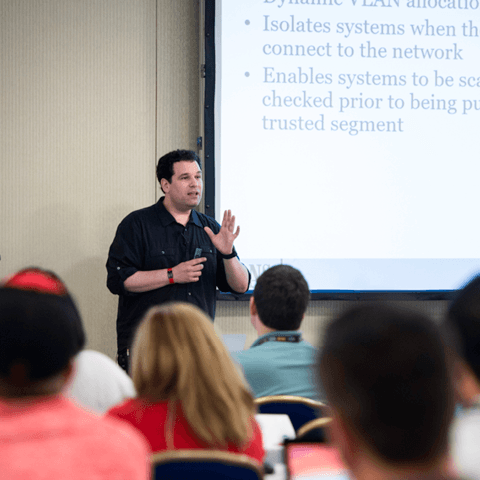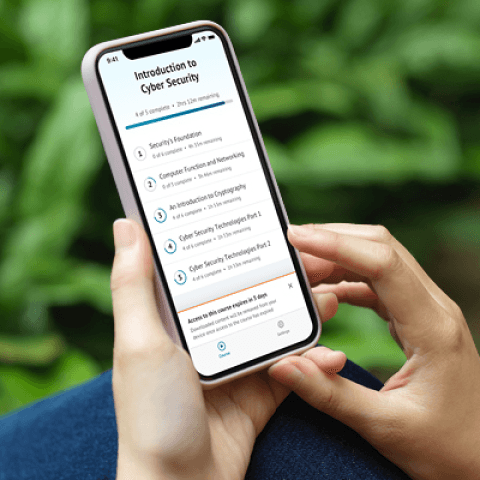SEC595: Applied Data Science and AI/Machine Learning for Cybersecurity Professionals


Experience SANS training through course previews.
Learn MoreLet us help.
Contact usBecome a member for instant access to our free resources.
Sign UpWe're here to help.
Contact UsApply your credits to renew your certifications
Attend a live, instructor-led class at a location near you or remotely, or train on your time over 4 months
Course material is geared for cyber security professionals with hands-on experience
Apply what you learn with hands-on exercises and labs
Master Red Team operations by leveraging adversary emulation, cyber threat intelligence, and Red Team tradecraft to execute consistent, repeatable engagements that improve defense effectiveness.
The course content is absolutely amazing. Even if you already have some knowledge on the topic, there is still a wealth of information that will further enhance your understanding and solidify your procedures!
The SEC565 Red Team course equips participants with the skills to plan and execute Red Team engagements through adversary emulation, leveraging cyber threat intelligence to map and replicate adversary tactics, techniques, and procedures (TTPs). Using the Unified Kill Chain and MITRE® ATT&CK™ framework, students learn to build and manage Red Team operations, set up attack infrastructure, and exploit Active Directory within a simulated enterprise environment. The course emphasizes practical exercises and culminates in analysis of Blue Team responses, reporting, and remediation planning. Graduates emerge prepared to deliver consistent, repeatable Red Team engagements that assess and improve the effectiveness of organizational defenses.


Jean-François is based in Portugal, where he is the CEO of Offensive Guardian, a boutique red and purple teaming shop providing freelance services to various organizations. He has worked for other noteworthy firms, including, but not limited to: Neuvik, TrustedSec, Fortra's Cobalt-Strike team, and NVISO.
Read more about Jean-François Maes

Dave Mayer is a cybersecurity professional with a background in red teaming, threat emulation, and offensive security. As the founder of Neuvik, he has worked extensively on adversary simulations and penetration testing, helping organizations strengthen their security posture against real-world threats.
Read more about David MayerExplore the course syllabus below to view the full range of topics covered in SEC565: Red Team Operations and Adversary Emulation.
This initial section establishes foundational concepts in adversary tactics, Red Team operations, and threat intelligence frameworks. Focus areas include engagement planning, threat actor analysis, and initial attack execution - all critical for emulating sophisticated adversaries in controlled environments.
Section two is an advanced command-and-control (C2) infrastructure and tooling deep-dive focused on resilient attack frameworks, evasive redirector implementation, and OPSEC hardening. Students learn operational security monitoring, infrastructure protection, and defender evasion through sophisticated C2 architectures and communication channels.
Advanced payloads and network infiltration tactics form the core of this section. Students explore stealthy weaponization techniques and learn to establishe reliable initial access vectors for target environments. We pay special attention to evasive post-exploitation methodologies, including privilege escalation chains and persistent access methods.
Students explore comprehensive domain enumeration and advanced privilege escalation within Windows environments. Deep technical analysis covers cross-domain attack patterns, trust relationship exploitation, and sophisticated lateral movement tactics. Each concept integrates with practical attack tool implementation for maximum operational impact.
Students navigate advanced database attacks, sensitive data exfiltration methods, and impact demonstration through targeted system manipulation. We comprehensively cover engagement analysis, strategic reporting methodologies, and automated breach simulation techniques for continuous security validation.
Students operate across multiple domains, implementing sophisticated attack chains against Windows and Linux infrastructures. The immersive environment presents authentic user activity patterns, rich intelligence gathering opportunities, and segmented network challenges requiring advanced lateral movement techniques.
Monitor and analyze activity across cloud environments, proactively detect and assess threats, and implement preventive controls and targeted defenses to protect critical business systems and data.
Explore learning pathAdd a GIAC certification attempt and receive free two practice tests. View pricing in the info icons below.
When purchasing a live instructor-led class, add an additional 4 months of online access after your course. View pricing in the info icons below.
The labs are fantastic, and they are fun to work through!
I studied for the OSCP. The course content and approach was OK, but this was next level. My mind was blown and I learned so much more. Simply excellent.
Course content is great. Very informative and up-to-date attack vectors.

Get feedback from the world’s best cybersecurity experts and instructors

Choose how you want to learn - online, on demand, or at our live in-person training events

Get access to our range of industry-leading courses and resources